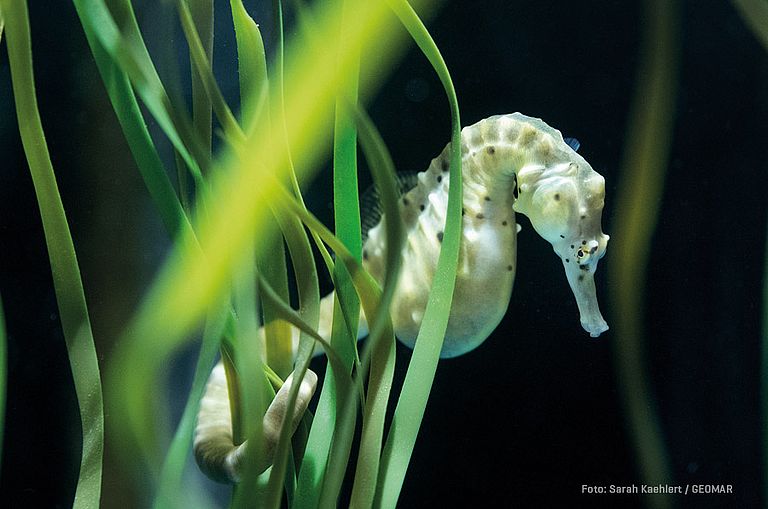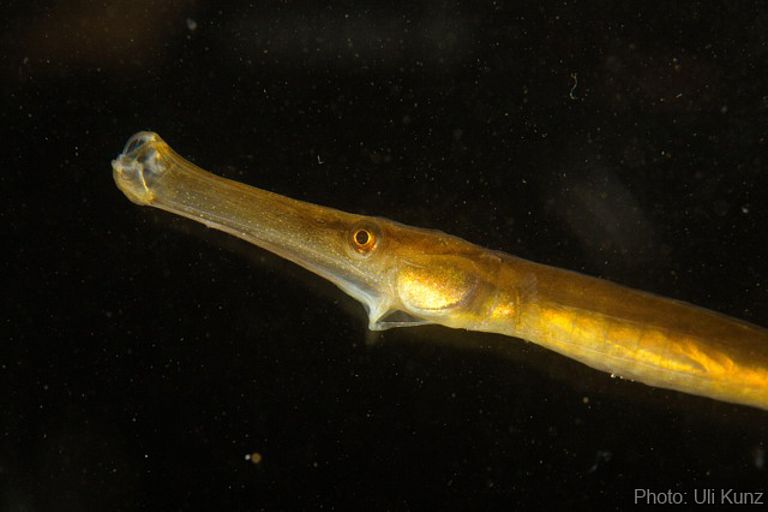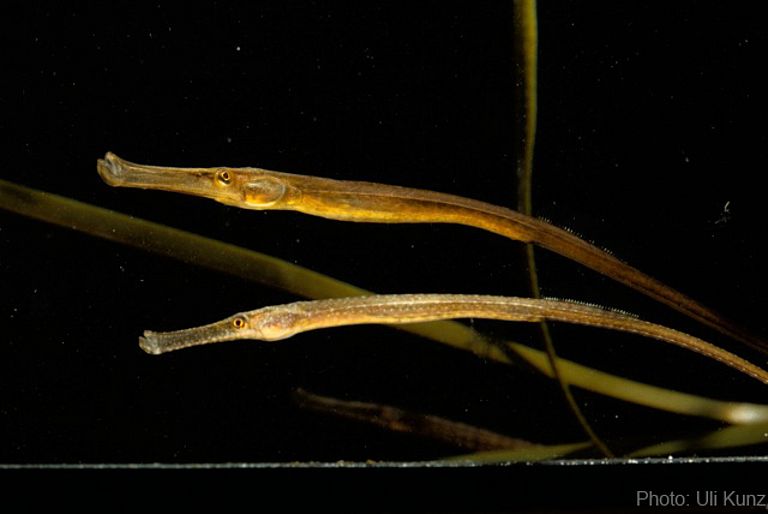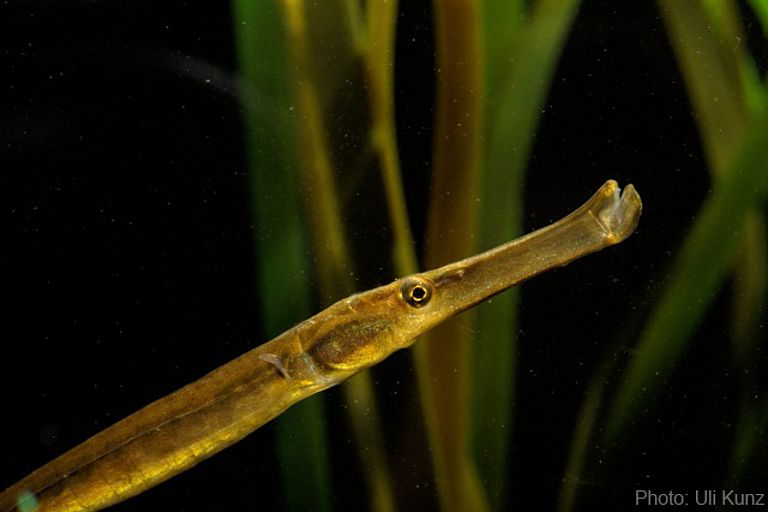Image of the month: May 2019
When seahorses become parents
Our picture of the month shows a seahorse of the species Hippocampus abdominalis. These seahorses live in the southwest Pacific, off the coasts of Australia and New Zealand. With an average length of 18 cm, this seahorse species is among the largest representatives . Like all seahorses and pipefishes, the males of Hippocampus abdominalis give birth to their offspring. This phenomenon of male pregnancy is unique in the animal kingdom.
That is why these animals are particularly suitable for the research of evolutionary biologist Dr. Olivia Roth. Together with her team, she is working at GEOMAR for a better understanding of viviparity as a method of reproduction. An organism can only become pregnant if its immune system does not attack the developing embryo. The scientists discovered that exactly those parts responsible for the rejection of non-self tissue have been lost in the genome of the pipefishes and seahorses. This loss could have enabled the unique evolution of male pregnancy in pipefishes and seahorses.
In 2017, Olivia Roth received a "Starting Grant" from the European Research Council (ERC) amounting EUR 1.5 million to continue with her research for the next five years. In collaboration with the Centre for Ecological and Evolutionary Synthesis at the University of Oslo her team tries to understand the evolutionary development of brood care.
Further information:
https://www.geomar.de/de/entdecken/artikel/article/das-raetsel-der-maennlichen-schwangerschaft/
Website of the research group:
https://www.geomar.de/de/mitarbeiter/fb3/ev/oroth/researchgroup-oroth






